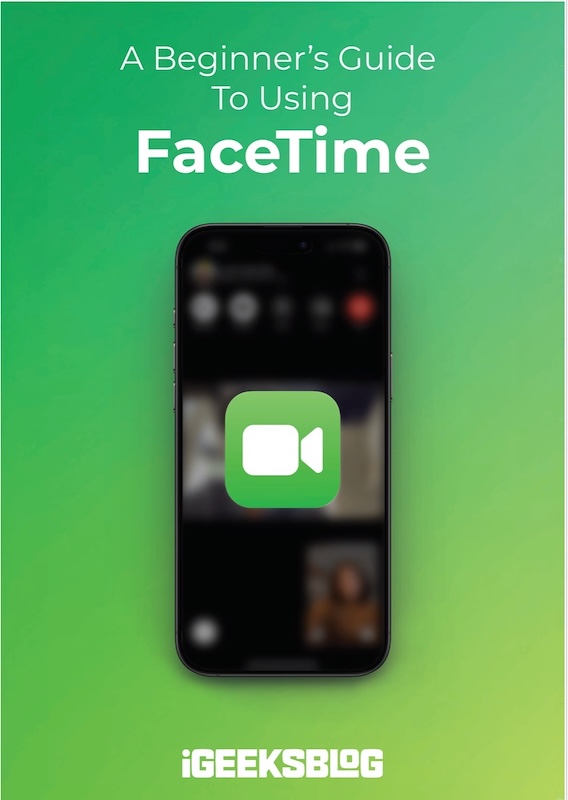
FaceTime Like a Pro
Get our exclusive Ultimate FaceTime Guide 📚 — absolutely FREE when you sign up for our newsletter below.

FaceTime Like a Pro
Get our exclusive Ultimate FaceTime Guide 📚 — absolutely FREE when you sign up for our newsletter below.
Apple’s move to eSIM-only iPhones brings stronger security and eco-friendly perks, but it also raises concerns for frequent travelers and users in regions with limited carrier support. Here’s everything you need to know before upgrading.
Apple shook things up in 2022 when it announced that the iPhone 14 would not ship with a physical SIM card slot in the United States. Instead, the devices relied entirely on eSIM technology. At the time, many assumed it was a one-off experiment, but every iPhone since has followed the same path.
Unlike the headphone jack, Apple hasn’t yet removed the SIM tray from all iPhones worldwide. Still, many expect it could happen in the near future. So, what does an eSIM-only iPhone really mean for you? Let’s break it down.

An eSIM (embedded SIM) is a digital version of the traditional SIM card built directly into your iPhone’s hardware. With eSIM, you can activate a mobile plan digitally via a QR code, carrier app, or Apple’s eSIM Quick Transfer, eliminating the need to wait for a physical card to arrive.
You can also store multiple eSIM profiles on one device, making it easy to switch between personal and work numbers, or local and international carriers, all within your iPhone’s settings.
Switching to an eSIM-only iPhone comes with several benefits that make life simpler, safer, and more efficient.
Forget waiting for delivery or visiting a store. In most cases, you can set up your line from home. Just note that activation isn’t always instant; some carriers may take a few hours.
A physical SIM can be removed if your iPhone is stolen. With eSIM, thieves can’t just pull it out to disable tracking. This makes features like Find My iPhone more reliable.
Removing the SIM tray frees up valuable internal space. Apple could use this for bigger batteries, improved cameras, or new components.
Traditional SIM cards come with plastic, packaging, and shipping waste. eSIM is fully digital, aligning with Apple’s sustainability goals.
eSIM-enabled dual SIM support, letting you keep two numbers, one for personal use, another for work, on the same iPhone.
While eSIM brings convenience, it also introduces a few drawbacks you should know before making the switch.
Some eSIMs take a while to activate, ranging from a few minutes to several hours, depending on the carrier.
In the case of a physical SIM, simply remove it from your old phone and insert it into the new one. However, the process isn’t as straightforward when it comes to eSIM. You usually need to go through your carrier’s activation process again.
Some carriers make eSIM transfers harder than they need to be, which can feel restrictive compared to swapping a physical SIM.
If you encounter connectivity issues, swapping a physical SIM to test in another phone is a straightforward process. However, with eSIM, you rely heavily on your carrier and Apple support to resolve issues.
While some carriers allow you to buy data packs when traveling abroad, countries like China have yet to adopt eSIM technology for iPhones.
Whether you are switching from an iPhone or an Android device, Apple makes it fairly easy with eSIM Quick Transfer during setup. However, not all carriers support this. If your carrier does not support Quick Transfer, you’ll need to contact them to reactivate, which may take some time.
If, for some reason, you didn’t transfer your eSIM during setup, you can do so later in the iPhone’s settings. Here’s how:

New to eSIM? Check out our step-by-step guide on how to use eSIM on iPhone to set it up and manage multiple plans with ease.
Apple treats China differently. iPhones sold in mainland China, Hong Kong, and Macau lack eSIM support entirely. Instead, they feature dual physical SIM trays, since local carriers haven’t widely adopted eSIM for iPhones.
This means Chinese iPhone users can enjoy dual SIM functionality—but only with two physical cards.
The decision to buy an eSIM-Only iPhone depends on the country you reside in. If you reside in the United States, you don’t even have the option to buy an iPhone with a physical SIM tray, unless you go for the global unit.
Similarly, if you reside outside the U.S., you don’t need to worry at all, as you still get the option to use at least one physical SIM.
Apple’s move toward eSIM-only iPhones is a bold step that offers security, eco-friendliness, and dual-SIM flexibility. But it also brings challenges like carrier dependency and international compatibility issues.
Ultimately, the shift is about pushing the industry forward. Whether it’s a smart move or a big mistake depends on your perspective and your location.
Would you switch to an eSIM-only iPhone, or stick with a physical SIM? Drop your thoughts in the comments.
Don’t miss these related reads: